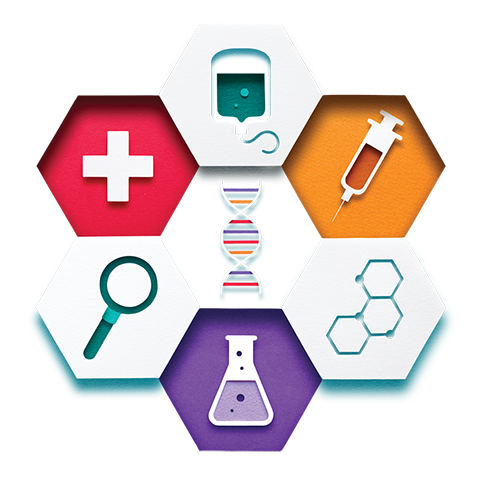A Longer Plan with Treatment Options

- Stomach troubles a precursor to stage III pancreatic cancer
- Shrinking the tumor with chemotherapy and radiation
- NanoKnife and side effects
I noticed I was having minor stomachaches starting in November 2015, as best as I can remember.
The stomach problems started to increase in January 2016. Since they always occurred around eating, I tried to vary my diet to get relief. Not much helped, but the stomachaches were not bad enough to go to a doctor and say I was having an upset stomach. Vomiting and diarrhea occurred occasionally but mostly after eating.
In March 2016, I developed a boil on my backside that became very painful; I could not sit down comfortably. I was forced to see my doctor at that time, and after she took care of my boil, I mentioned my stomach problems. She analyzed a stool sample and thought all was ok but recommended I see a gastrointestinal doctor. That doctor performed a sigmoidoscopy but found nothing that concerned him; however, he thought I had Gilbert’s syndrome, since my bilirubin was high. But since Gilbert’s syndrome should not be causing an upset stomach, occasional vomiting, or diarrhea, the gastroenterologist suggested I get a CT scan. I had the scan on April 7, 2016, and it showed a tumor and a cyst in my pancreas. I had an endoscopy on April 14; the cyst was removed, and a sample of the tumor was taken. The first round of testing was inconclusive, but a second look indicated cancer.
A Plan to Shrink My Tumor
The diagnosis was stage III pancreatic adenocarcinoma. I was not able to have a resection of the tumor because of its location around the superior mesenteric artery. Dr. Martin Palmeri, my oncologist (now in Asheville, North Carolina), set up a treatment protocol for me. The plan was to shrink the tumor so it was no longer wrapped around the artery, and then I would have either a resection or an irreversible electroporation (NanoKnife).
I started IV infusions of Gemzar and Abraxane on May 1, 2016. I had these infusions once a week for two weeks and then was off for one week over a period of four months. Twice my blood counts prohibited me from getting the infusion.
I was given steroids and anti-nausea drugs at the time of each infusion. I also took prochlorperazine and/or Zofran the day after treatment to prevent nausea. Over the course of the four months, I was sick enough to vomit less than five times, for which I felt very thankful and blessed. On the day after the infusion, I had a great amount of energy—I assume this was from the steroids. On the second day after the infusion, I felt fatigued—not enough to severely limit my activity, but I rested more on those days. My hair was gone by the third chemo treatment, and I developed a body rash around my midsection after the third week of infusion. After applying lotion, the rash disappeared in a couple of weeks.
After three months, I had another CT scan, which revealed a reduction in tumor size. My CA 19-9 was dropping quickly.
Next Steps and Side Effects
The next step was radiation with Dr. William McCollough, which I underwent daily for approximately 25 days. I took Xeloda orally in conjunction with the radiation, on a schedule of 14 days on and seven days off. At the end of the 14 days of Xeloda, the bottom of my feet would get tender, but I did not develop blisters. After radiation and chemo ended, I noticed I had difficulty walking upstairs because my legs had become very weak. This lasted for about four weeks.
While I was having the radiation, I noticed a gray curtain effect in my right eye. I learned I had a retinal virus, possibly because my immune system was compromised during chemo and radiation. I had my retina surgically reattached, but the virus did quite a bit of damage and I no longer have sight in my right eye.
A CT scan a month after radiation showed the tumor was smaller and just butted up against the artery. My CA 19-9 numbers were low.
Time for NanoKnife
Dr. Palmeri recommended that I travel to Louisville, Kentucky, to meet with Dr. Robert Martin, a leader in irreversible electroporation, also known as the NanoKnife surgery. I underwent this procedure on January 5, 2017, and the ablation was successful.
Like most NanoKnife patients, I had the recommended feeding tube in place for three months. I started chemo IV infusions of Gemzar in February 2017, along with Xeloda. I continued this chemo regimen until July 3, 2017. I got blisters on my hands and feet from the Xeloda, so my doctor gave me a two-week holiday from the drug and then reduced my dose.
A CT scan three months after the NanoKnife surgery showed the tumor was still there but not active. Dr. Palmeri remained concerned and wanted another expert to look at the scan to see if the tumor needed to be removed. I had a PET scan and an MRI. The consensus was the tumor was so involved with my arteries that it would be dangerous to remove it, especially since I was doing well and it appeared to be dormant. Good news, but there was a cyst on my right ovary, something they had seen on a previous scan but it had gotten larger. I was referred to Dr. Timothy Vanderkwaak, a gynecologic oncologist, for my ovaries because of my cancer history.
On August 30, 2017, I had laparoscopic surgery to remove my ovaries and fallopian tubes. All went well, but the cyst was cancerous. The doctor got it all, however, and no further medication was needed. I was relieved.
Continued Vigilance
I continued to have CT scans every three months, which was a good thing because one scan detected a blood clot in my pancreas, pressing on a vein. I gave myself injections of enoxaparin for three months. The clot did not go away, but there were many collateral veins around the clot, so the injections were stopped. Isn’t it wonderful how the body heals itself?
Dr. Martin asked me if he could use samples of the tumor for research. I signed the papers, but I do not know exactly what kind of testing was performed.
Dr. Vanderkwaak suggested testing for ovarian and breast cancer mutations. I found out that I have a BARD1 gene mutation, which increases my chances of breast and ovarian cancers. Owing to this mutation, he has suggested increased breast examinations. I was also tested for Gilbert’s syndrome. Because I have the BARD1 mutation, my oncologist changed the choice of chemo drugs ordered for me.
I had a CT scan in June that showed a lesion on my liver, and my CA 19-9 has been rising slowly. I am scheduled for an MRI, to help evaluate the liver lesion, and a meeting with my doctor in mid-July, which will determine the next steps. Praise God!
Eighteen months after sharing her story, Susan passed away. Challenged by side effects she continued to pursue treatments and underwent genetic testing to find one that might make a difference. We offer our deep sympathy to her family.






